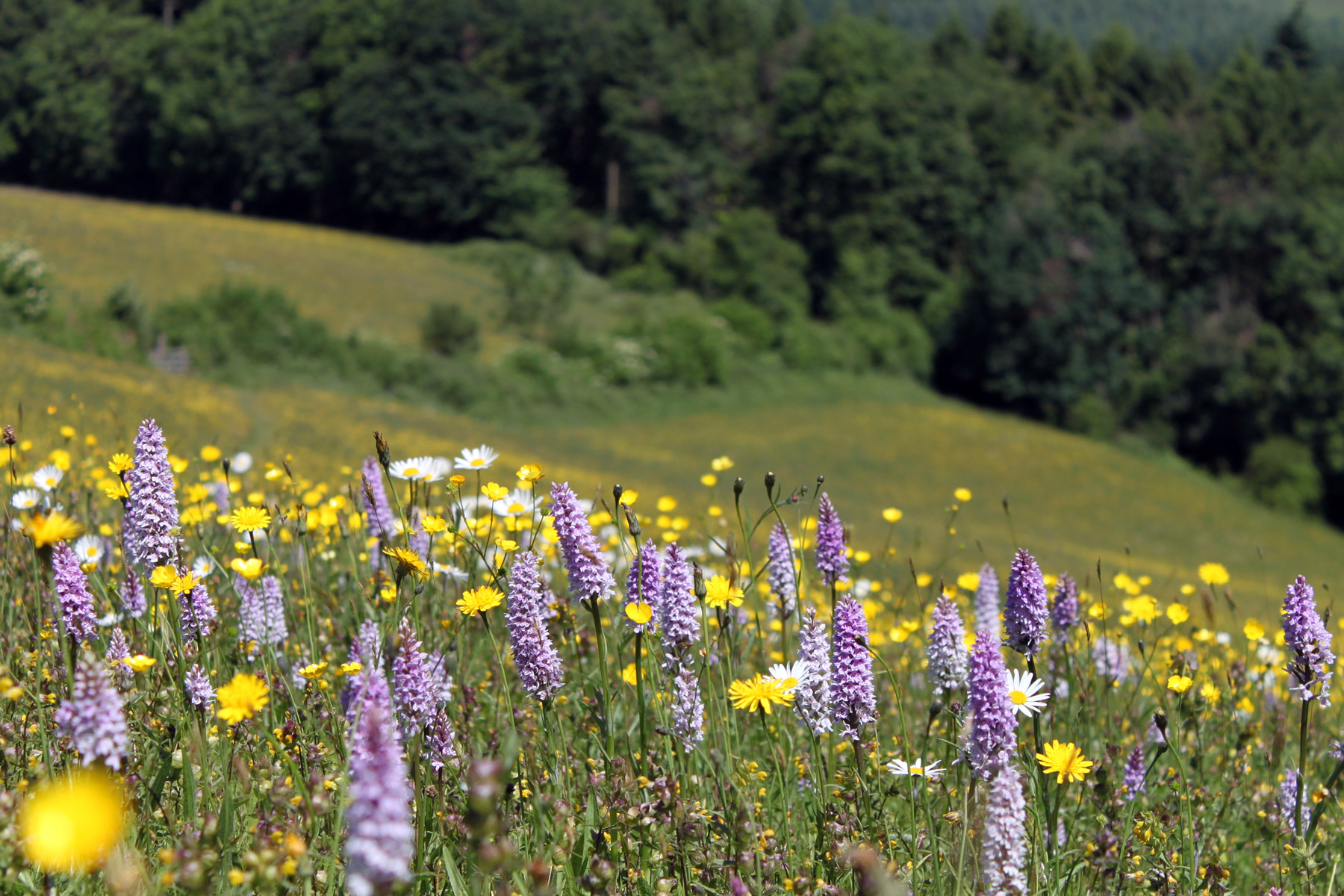Jo Weightman led a group of Herefordshire Meadows members on a walk at Eaton Camp on 23 October 2023 courtesy of National Trust. The cattle had been turned off 2 weeks before and grassland fungi were easy to find despite the recent heavy rainfall; including waxcaps, spindles, club fungi, corals, bonnets and mottlegills. Thank you Jo for an excellent morning – we all left inspired to go and look at our own grasslands with new eyes.
We found 8 different wax caps in a range of colours and textures from orange through yellow, buff, white and with green tinges. Textures varied from oily to waxy and some were drier and easier to handle. Jo explained it’s essential to look under the cap of the fungus, to look carefully at exactly how the gills are attached to the stem. Also the colour of the spores which is (usually) the same as the colour of the gills ( check back at home).
An excellent book Grassland Fungi – a field guide ( 2nd edition) by Elsa Wood and Jon Dunkelman is published by Monmouthshire Meadows and available from NHBS and other booksellers. This has lots of photographs of key and distinguishing features from similar species. There are also various apps available to help with ID
Plantlife’s Waxcap Watch has an app that can be downloaded to your phone, some course material and resources including a very useful Guide to Waxcaps and how to identify them. This guide has a useful table to help you know if you have good waxcap grassland – it’s a simplified version of the more detailed CHEGD count that ecologists can do :-
Spindles, club and coral fungi (Clavarioids)
The waxcaps (Hygrocybe)
Pinkgills (Entoloma)
Earthtongues (Geoglossum), and
Crazed caps (Dermoloma and relatives).
These fungi form part of what ecologists call the CHEGD fungal assemblage – that is the key fungi groups that appear in old, ‘unimproved’ grassland and which are often found in association with each other – in so-called “Waxcap grasslands” (Thanks to Sarah Jameson for this summary)
If you do the more simple Plantlife count and find your grassland is of local or regional interest – or if you just want to learn more then contact Hereford Fungus Survey Group (HFSG) www.herefordfungi.org
There is also a new ispot waxcap app available that is in the testing stage; all feedback welcome through the app
| Herefordshire Meadows waxcap walk Eaton Camp 23.10.2023 | |
| Recorder – Jo Weightman | Hereford Fungus Survey Group |
| Bolbitius titubans | Yellow fieldcap |
| Clavaria fragilis | White spindles |
| Clavulinopsis corniculata | Meadow coral |
| Clavulinopsis laeticolor | Handsome clubfungus |
| Cuphophyllus pratensis | Pale / meadow waxcap |
| Cuphophyllus virgineus | Snowy waxcap |
| Gliophorus irrigatus | Slimy waxcap |
| Gliophorus psittacinus | Parrot waxcap |
| Hygrocybe ceracea | Butter waxcap |
| Hygrocybe chlorophana | Golden waxcap |
| Hygrocybe insipida | Spangle waxcap |
| Hygrocybe quieta | oily waxcap |
| Mucilago crustacea | dog sick slime mould |
| Mycena aetites | drab bonnet |
| Atheniella flavoalba (Mycena flavoalba) | ivory bonnet |
| Mycena vitilis | snapping bonnet |
| Panaeolus acuminatus | dewdrop mottlegill |
| Panaeolus papilionaceus | petticoat mottlegill |
| Rhytisma acerinum | sycamore tarspot fungus |





